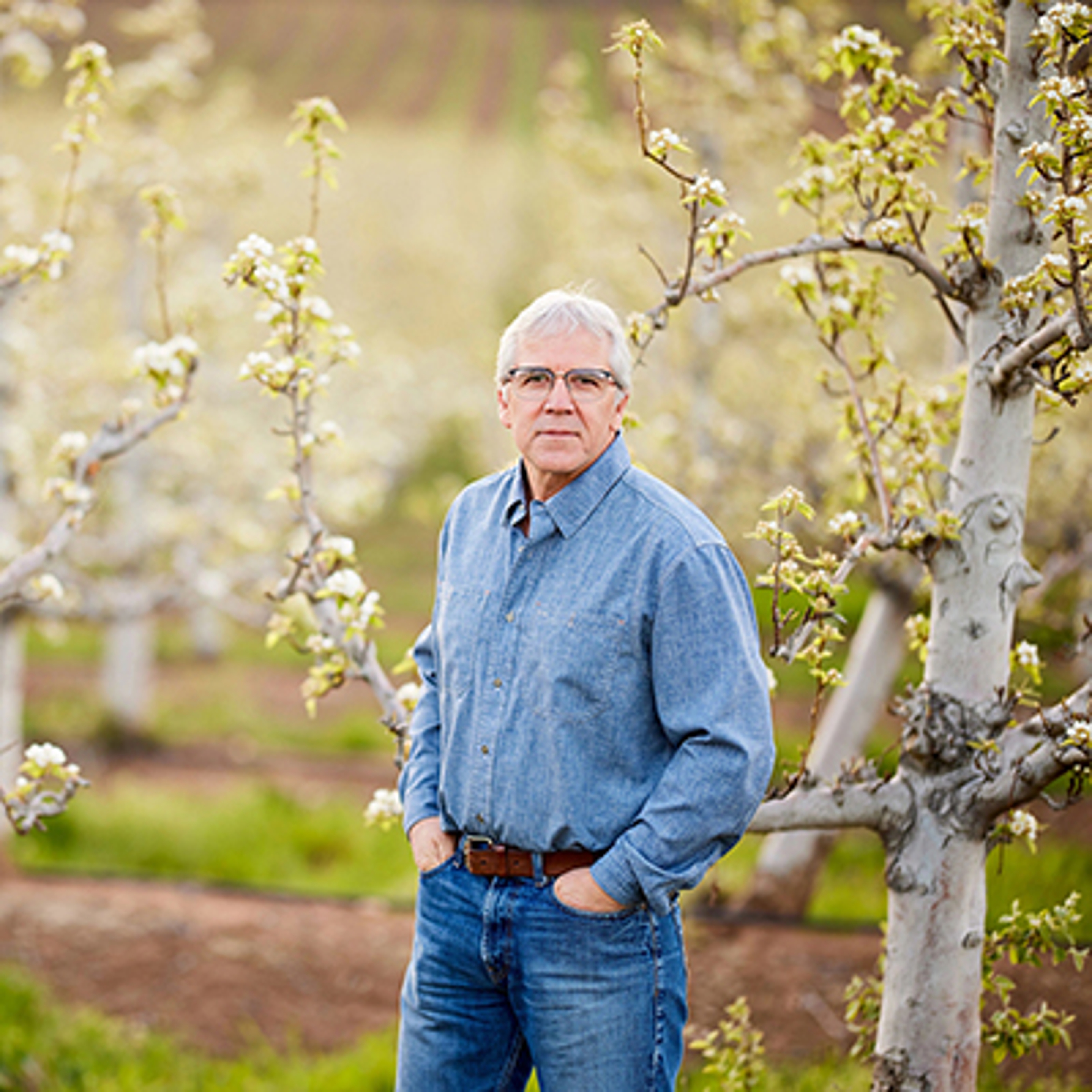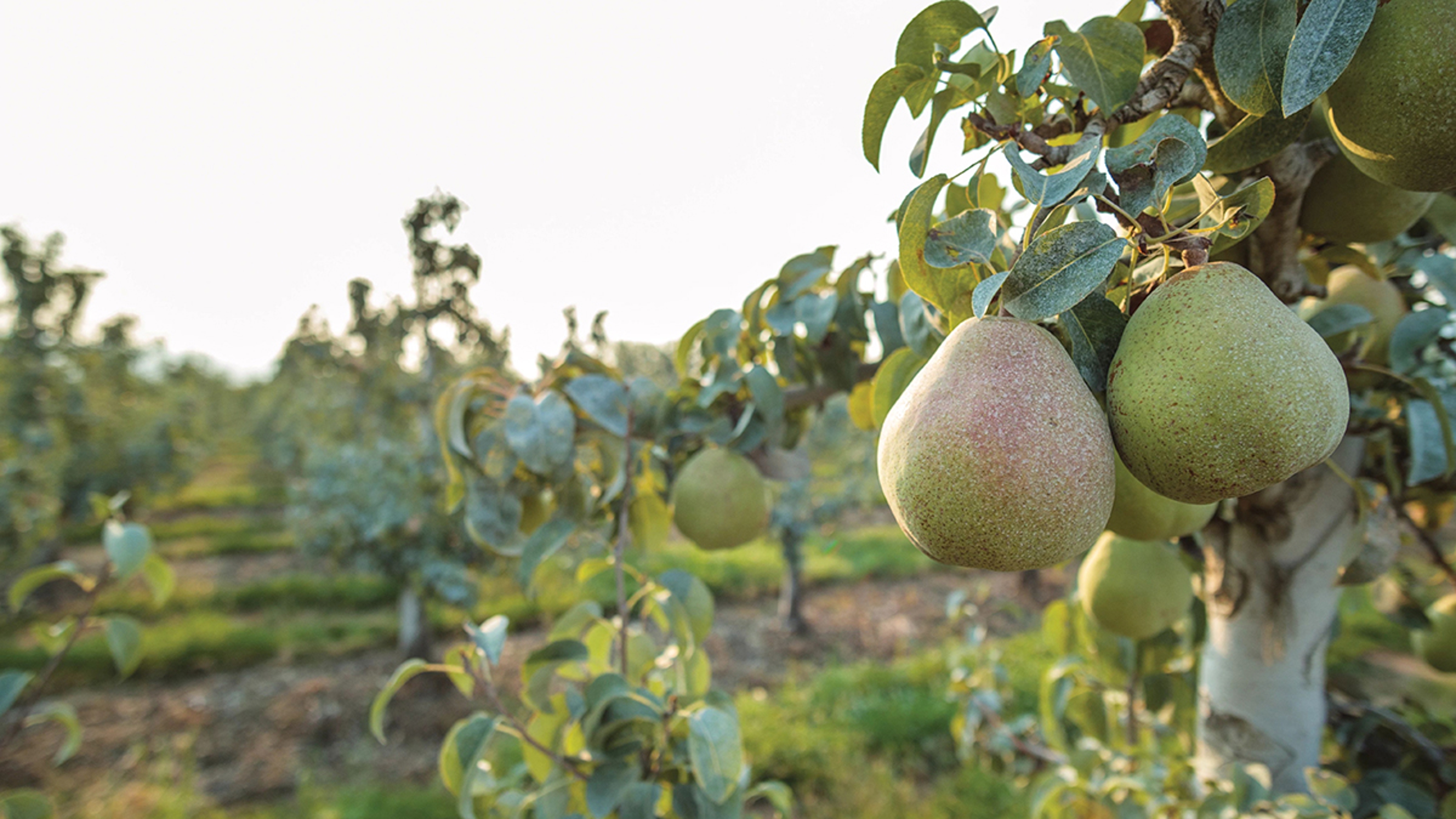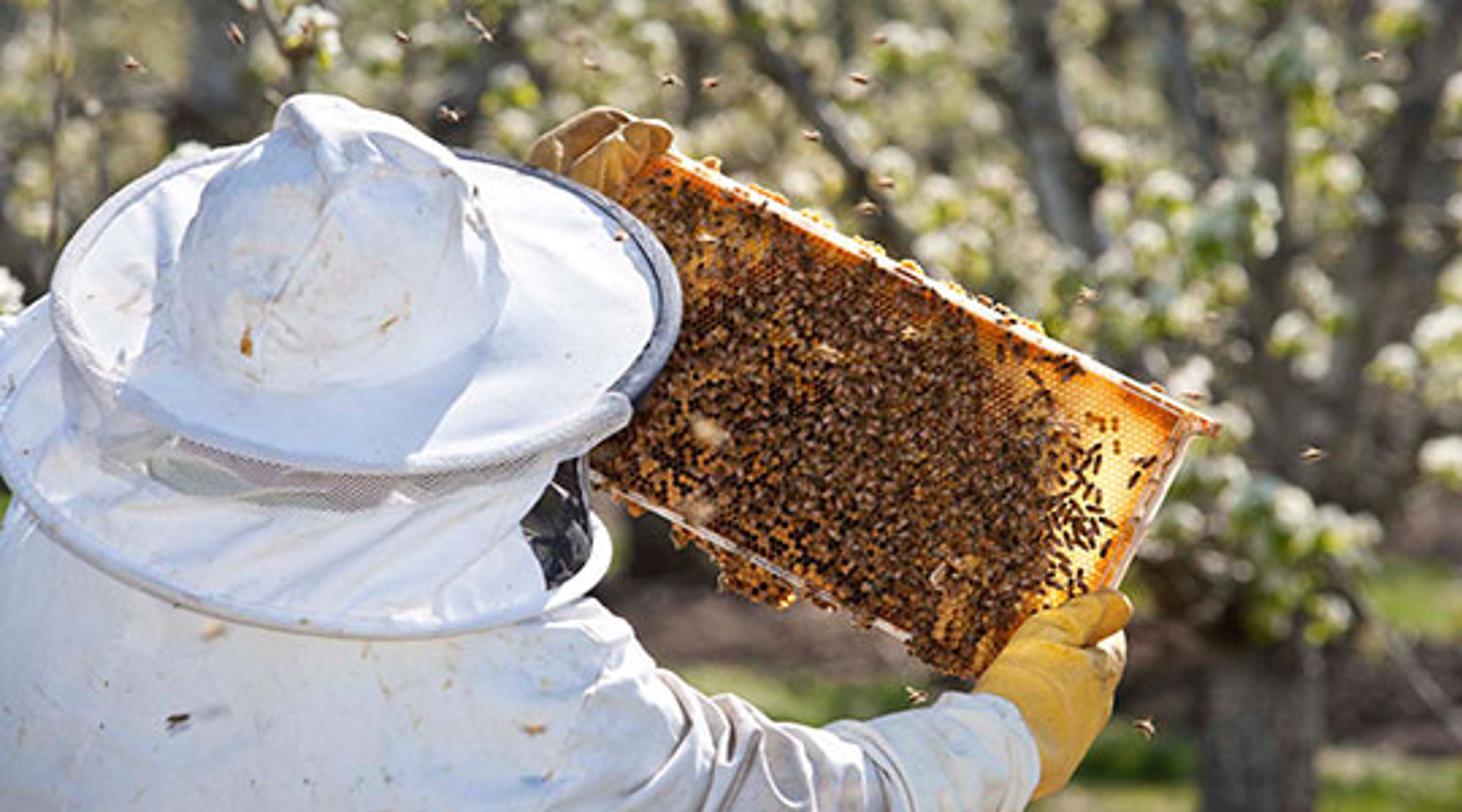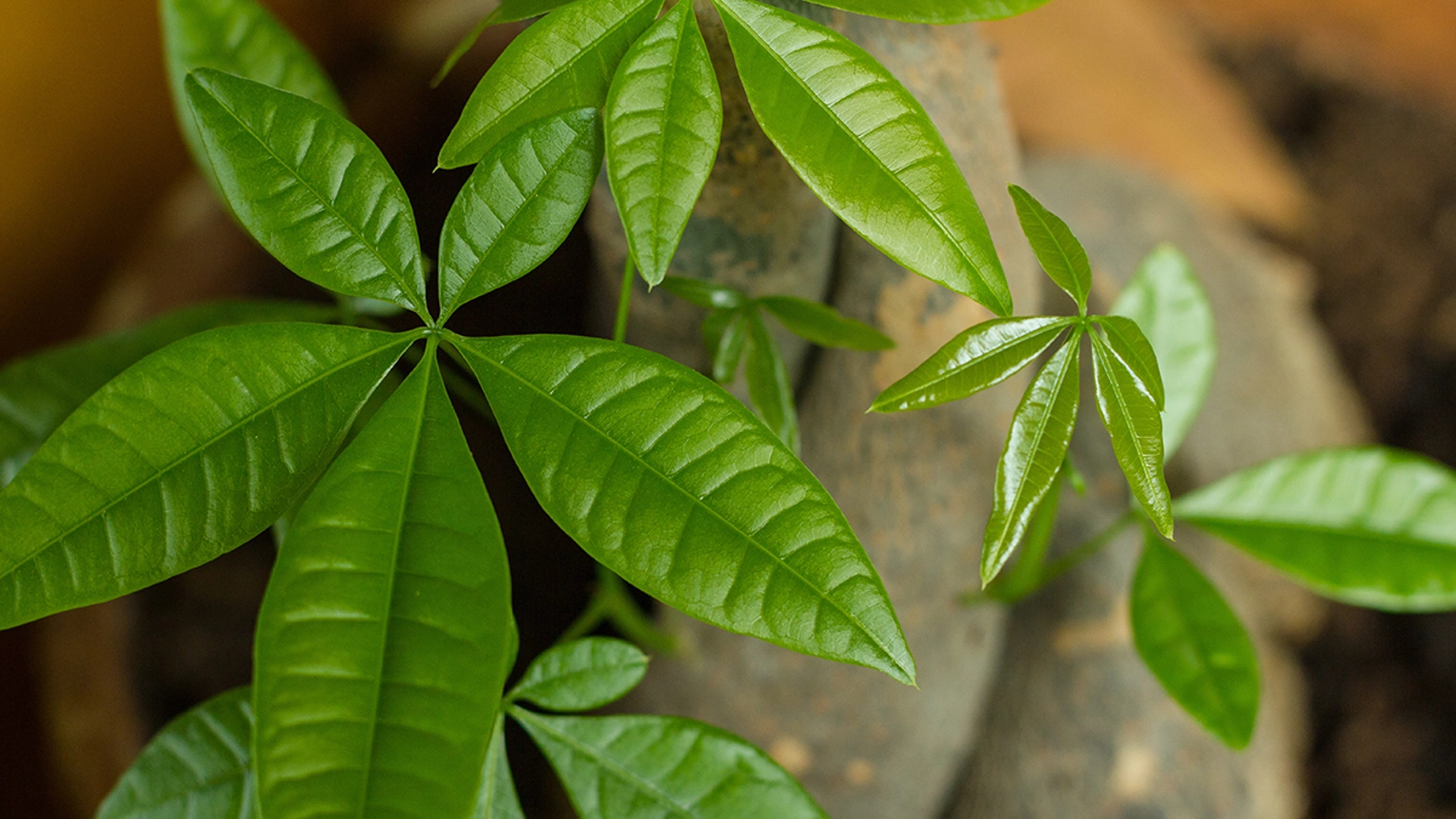The Importance of Bee Pollination in Our Orchards
Without pollination, you can forget about those mouthwatering peaches and pears.
Aug 13, 2024
The Harry & David orchards, known for producing some of the juiciest pears and peaches, are meticulously tended to year-round. And in spring and summer, they start to see the actual fruit of many peoples' labor. But one of the most important steps in growing fruit isn't done by any of the workers in the orchards but by worker bees, actual bees (honeybees, to be more precise). I'm talking about pollination.
Each year, Harry & David contracts to bring beehives into its orchards, which ensures that its trees are optimally pollinated. Why is this important? We spoke with Vice President of Orchards Matthew Borman — he's kind of like the king bee of these orchards — to answer our swarm of questions.

For those who do not know, what role do bees play in the orchards?
Bees play a vital role in the pollination of our peach and pear trees. The process of pollination fertilizes the blossoms in our orchards, enabling the trees to produce tons of mouthwatering fruit each year.
Exactly how do bees pollinate flowers?
The bees fly from flower to flower to feed on the sweet nectar in the blossoms. Pollen sticks to the bees' bodies and is transferred from one flower to another, thereby completing the fertilization cycle.
I wish you were my science teacher in high school.
How does the business of renting beehives work?
We contract with beekeepers on a per-hive cost basis. The beekeepers’ hives may make a journey to the almond orchards in California in February and March before coming to the Rogue Valley, where peaches and pears bloom, starting in mid-March and finishing in April.
When do you bring them into the orchards? How long do they stay?
The hives are placed in the orchards when 5 to 10 percent of the flowers are in bloom, and they remain throughout the entire blooming stage, which usually lasts two to three weeks.
Over the course of the bloom, how many bees will you bring in? How much area can a single beehive cover?
Pollination is different depending on the crop; the number of hives per acre may range from less than one to more than two depending on what is being pollinated. In peaches, we place a little over one hive per acre, but in pears, it's closer to 0.8 hives per acre. This year we contracted for more than 1,500 hives to pollinate nearly 2,000 acres.

Are there any special or unique tools for handling or working with the bees?
We don't handle the beehives ourselves, but the contracted beekeepers use special suits for personal protection. We try keeping the hives located in such a way that they are not disturbed, as they will forage for flowers wherever they can; we tend to place them inside the orchard and away from borders.
Bees can fly and move throughout the orchard easily, but we still like to spread them out so they don't have to work so hard. During cold springs, the beekeepers will bring them food to keep them strong when it's too cold to fly.
Is there anything else unusual or interesting about the process?
Most folks don't know that pollination is a bit of a numbers game. In a natural habitat, bees and other pollinators are less available, so Mother Nature relies on having a surplus of flowers to increase the odds of having a good fruit set.
For orchards like ours, there is a delicate balance between having too much fruit and not having enough. The timing, placement, and duration of the hives remaining in the orchard is crucial. In some years, bloom may last for up to three weeks and in others less than a week, making the plan for each year a bit different. Of course, there are always bears….

What would happen if there were no bees?
The answer ranges from reduced fruit to apocalyptic.
If this is more of a happy story, then honeybees are not the only pollinators, but they are the primary pollinators for the majority of food we consume, including the peaches and pears that we grow. Without them, pollination would be greatly reduced, and so would the number of fruit we would have to sell.
The seed produced when pollination takes place is a physiological driver for the plant to carry the fruit to term (viable seed). The fruit, in many ways, is the protective coating for the seed inside and, of secondary importance, to the plant itself. No seed, no reason to have the fruit.
So, if you isolate the question to “What would happen to the orchards if the honeybees were gone?" [the answer is] they would not be economically viable any longer. The trees themselves wouldn't die, but there would be little or no crop to harvest.
.svg?q=70&width=384&auto=webp)






